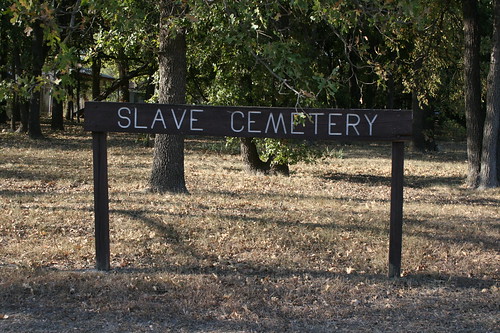I was born in Dallas and have lived in Texas all my life. When I was a little girl, I can remember seeing “colored” entrances, restrooms and drinking fountains in older downtown buildings. Jim Crow was dead, in legalities at least, so no black person was forced into using these lesser amenities, but they had not been removed yet. In some places in older parts of Dallas, such reminders of the nastier parts of racial history in the USA weren’t remodeled or removed until the 1980s.
I tell you all of this because while I was and still am aware that race relations in the USA are difficult, it was still… shocking when I began cemetery investigation and saw that segregation was enforced even in death. The slave and “colored” sections of “white” cemeteries were seldom maintained well, which is not particularly surprising. But I discovered that large chunks of history were lost in those slave and black sections of cemeteries, making even some of the simplest genealogy or historical research maddening, if not completely impossible.
And there’s no way around this expression of sentimentality – often slave and Jim Crow cemeteries are sad places indeed.
The first slave cemetery I found was in Round Rock Cemetery in Round Rock, Texas. I was there looking for the graves for some Old West villains and lawmen, and was startled when I saw it.

Note that you can’t actually see any headstones beyond that sign.